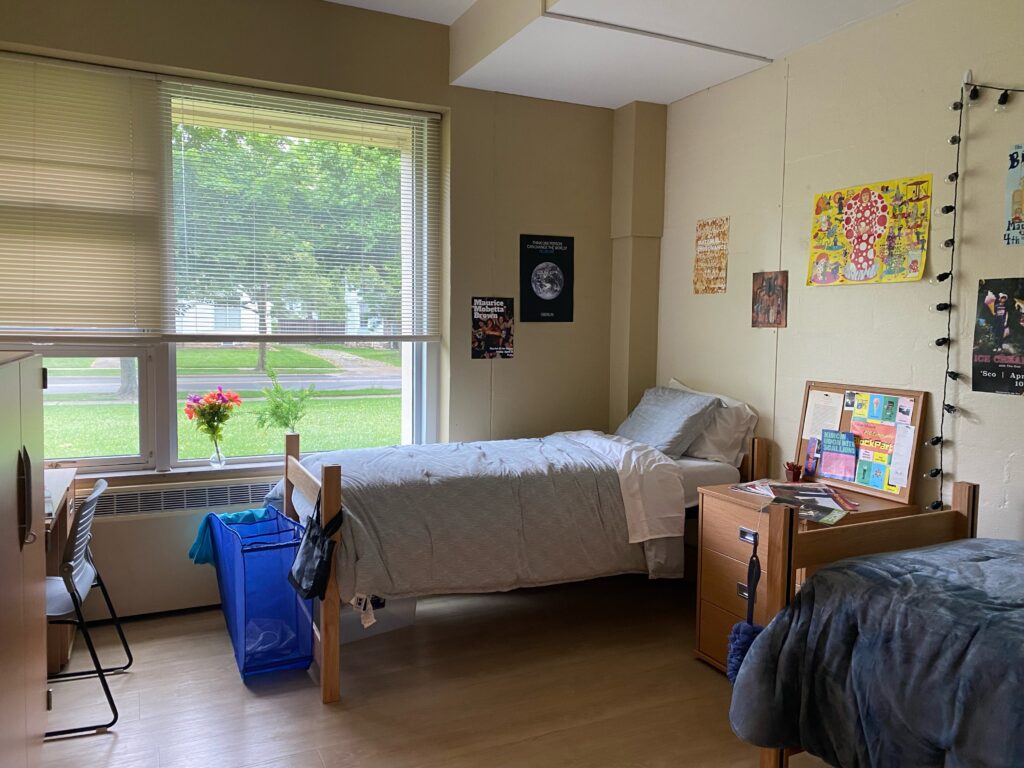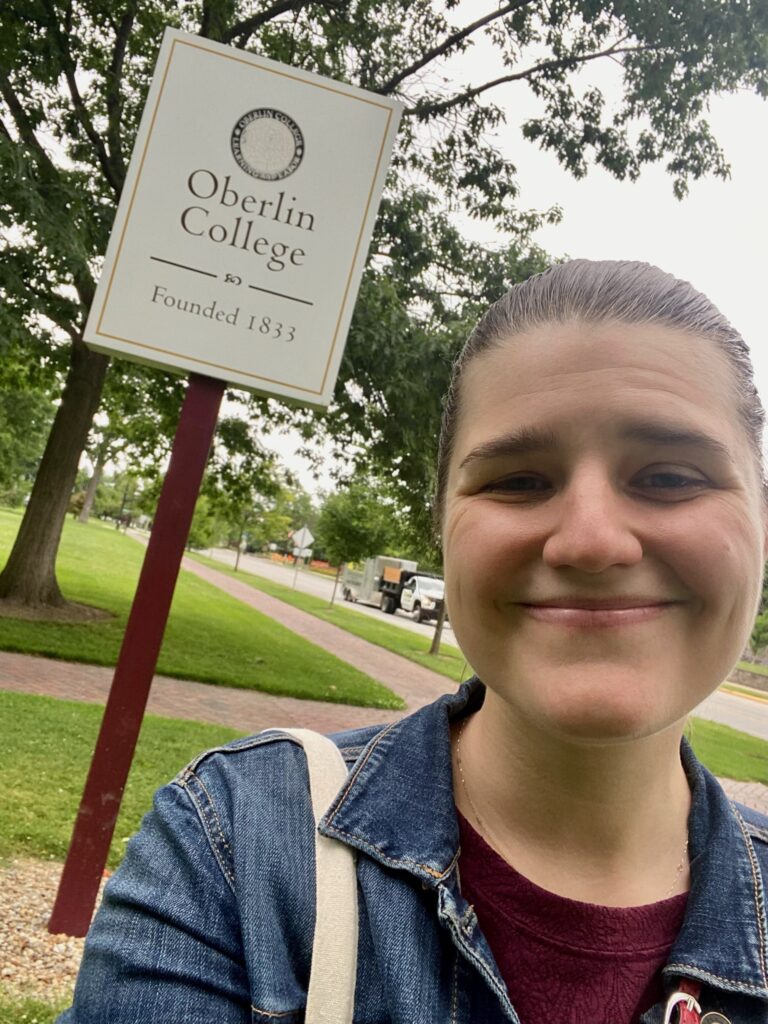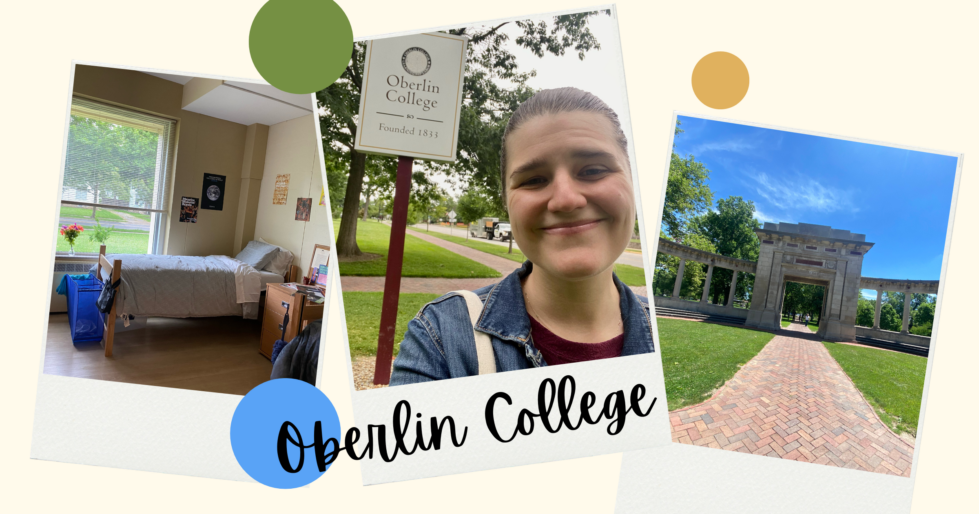Since its founding in 1833, Oberlin College has had a “history of doing the right thing – even when it is unpopular.” This statement seems to be the in fabric of this small liberal arts college located 35 minutes from Cleveland.
In its early days, these decisions included being the first college to admit and graduate Black students (1835) and women (1837). A century later, the college responded to students’ demands for more affordable living options by opening one of the country’s first student-run cooperative housing locations (1950s). Most recently, Oberlin launched an initiative to become carbon-neutral by 2025. This project has led to campus construction projects that can be inconveniencing and unattractive to campus visitors; and when completed, the results will be invisible to the public. Like its predecessors, Oberlin is, again, investing in what is right rather than what is pretty.


Academics: “Rigorous, which is different from hard”
Oberlin has earned a reputation for its excellent academics and renowned music conservatory. Its liberal arts philosophy is designed to be rigorous, “which is different from being hard,” one admissions professional says. “Students will be given the opportunity to think about multiple topics, not just one… They will be asked big questions; but when they break them into smaller questions, they become easier to solve.”
The curriculum is similar to other small liberal arts colleges. There is a set of academic requirements that students can fulfill through classes of their choice balanced with a substantial number of courses related to an intended major (or two!). Of the 32 courses required to graduate, only ~10 need to be part of a major – making it seamless for students to take their time when selecting areas of study.
One common academic topic in the Oberlin community is students’ Winter Term activities. While no classes are conducted during the month of January, students are required to use this month to complete projects of their choice during three of their four years. The recommendation is that one project be for their career, one for their community, and one for themselves. Examples of Winter Term projects have included Spanish Immersion in Guadalajara, Collaborative Coding, and Squirrel Behavior Research.
Conservatory of Music
Students practicing music at the collegiate level are likely familiar with the stellar reputation of Oberlin’s Conservatory of Music. While only 500 students are enrolled, there are no shortage of performance and learning opportunities with 42 majors/minors, 11 performance spaces, 30 student ensembles, 500+ performance per year. In 1877, Oberlin achieved another milestone by becoming the first campus to provide only Steinway & Sons pianos for practice and performance. Today there are over 240 pianos available to students in their recital halls, practice rooms, residential halls.
Please note that students intending to earn a Bachelor of Music degree in the Conservatory must complete a separate admissions application. Students who are interested in both the Conservatory and the College of Arts and Sciences will complete both applications.

Life at Oberlin
Oberlin is a four-year residential campus. The aesthetic is very collegiate with older buildings being preserved through necessary upkeep. Campus feels sizable despite consisting of only 440 acres. This may be due to different aspects of student life are spread out from each other. Residence halls, academic buildings, the Conservatory, athletic complexes, and student co-ops sit in their respective corners of campus, preventing students from isolating themselves in one area.
The town of Oberlin is located right on the perimeter of campus and offers the storybook image of a small college town – with charming shops, quaint art studios, and beloved independent restaurants and coffeeshops lining College St., the town’s main thoroughfare. However, it does not seem unusual for students to regularly venture into Cleveland for entertainment or internships, especially with multiple shuttles available during the week.


Final takeaways
Oberlin College is the real deal. It is no surprise that its history and mission have inspired thousands of students to join this community of scholars, artists, and activists. And if such a legacy is intimidating, prospective students can take some reassurance that the college maintains that it seeks to enroll a community of disparate views and experiences, and it offers an incredible number of resources to ensure all students can authentically thrive.
- Enrollment: 2,900
- Deadlines
- Early Decision I: November 15
- Conservatory: December 1
- Early Decision II: January 2
- Regular Decision: January 15
- Admission rate: 35%
- Standardized test policy: Test-optional
- Average ACT: 32-34
- Average SAT Math: 690-770
- Average SAT Verbal: 710-770
- Financial aid: 100% of financial need met
- Majors: 80+
- Average classroom size: 80% under
- Student to faculty ratio: 11:1


